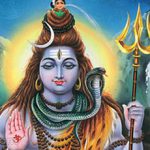About Vivah Panchami
Vivah Panchami is an auspicious Hindu festival celebrated to commemorate the wedding of Lord Sri Rama and Devi Sita. This momentous occasion is observed on the fifth day of the Shukla Paksha (waxing phase of the moon) in the month of Margashirsha (November-December). The ‘Vivah Utsav’ festival is observed in a big way across the length and breadth of the country and witnesses the enactment of the divine marriage ceremony in temples and other sacred venues associated with Lord Rama. The festival is observed with great fanfare in the region of Mithila in India and also at Janakpur in the neighboring country of Nepal.
Vivah Panchami Celebrations:
The momentous occasion of Vivah Panchami is observed with great enthusiasm in the city of Ayodhya, the birth place of Lord Sri Rama. Temples across the city are brightly illuminated with lamps. Grand festivities are also organized to commemorate the occasion. The festivities on this day include the enactment of the wedding ceremony and solemnizing the union of the divine couple. The idol of Lord Rama is taken on a grand procession from one temple to another, and ultimately concludes with the ceremonial wedding taking place on the evening of the day. The idols of Lord Rama and Devi Sita are adorned in wedding finery and jewelry befitting the occasion. This ceremony is popularly referred to as ‘Ram Vivah Utsav’. Throughout the day, devotees also sing devotional songs in praise of Lord Rama. Devotees also organize stage shows and cultural programs to commemorate the occasion. Renditions of Ramleela, depicting the life of Lord Rama and Devi Sita are also observed in many regions as a part of the celebrations. Scores of people from different regions and parts of the country come here to revel in the spirit of the festivities.
The festivities in Janakpur are conducted in a big way to celebrate the Ram and Sita Vivah. Temples conduct special rituals and Pujas to mark the occasion and devotees await their turn patiently to have a ‘Darshan’ of the divine couple. The festivities in the renowned ‘Dasharath’, ‘Ram’ and ‘Janki’ temples are conducted on a grand scale, with thousands of devotees participating in the proceedings. Witnessing the enactment of the Ram and Sita Vivah is said to be highly rewarding; those who do so are blessed with a happy and harmonious family life. Many newly- wed couples also come here to seek divine blessings for a long and blissful marital relationship.

Rituals of Vivah Panchami
The rituals observed on the auspicious occasion of Vivah Panchami include taking a holy bath in the sacred waters of the lakes in Mithilanchal like ‘Dhanushsagar’, ‘Gangasagar’ and ‘Argaza Pond’.
Devotional songs from the ‘Ramayana’ are sung by devotees to mark the occasion.
The idols of Ram and Sita are dressed in wedding finery.
The idol of Lord Rama is taken out in a grand procession.
The wedding ceremony of the divine couple is enacted in temples and other venues.
Special Pujas and rituals are held in all Rama temples.
Significance of Vivah Panchami:
According to the Ramayana and various other sacred Hindu texts, Vivah Panchami is an extremely auspicious and propitious day. The holy union of the divine couple ‘Sri Ram and Devi Sita’ on this day makes it extremely noteworthy. The events leading to this ceremony were pre-ordained and the celestial couple was destined to join in holy matrimony on the earthly plane, since Sri Ram is none other than Lord Vishnu himself and Devi Sita is Goddess Lakshmi. Events lead to Ram visiting Janakpur and winning the hand of Sita in a Swayamvar organized by King Janak.
This occasion has since been immortalized for posterity in Indian culture and religion, with devotees enacting the scenario every year on Vivah Panchami day to commemorate the union of Ram and Sita.
The occasion of Vivah Panchami also serves to strengthen the bond between India and Nepal, which have traditionally been linked together for centuries due to the similar cultural and religious rituals practiced in both countries.



Your point of view caught my eye and was very interesting. Thanks. I have a question for you.
amoxicillin cvs pharmacy Dexanabinol Pharmos
I don’t think the title of your article matches the content lol. Just kidding, mainly because I had some doubts after reading the article.
Your article helped me a lot, is there any more related content? Thanks!
I don’t think the title of your article matches the content lol. Just kidding, mainly because I had some doubts after reading the article. https://www.binance.com/ar/register?ref=V2H9AFPY